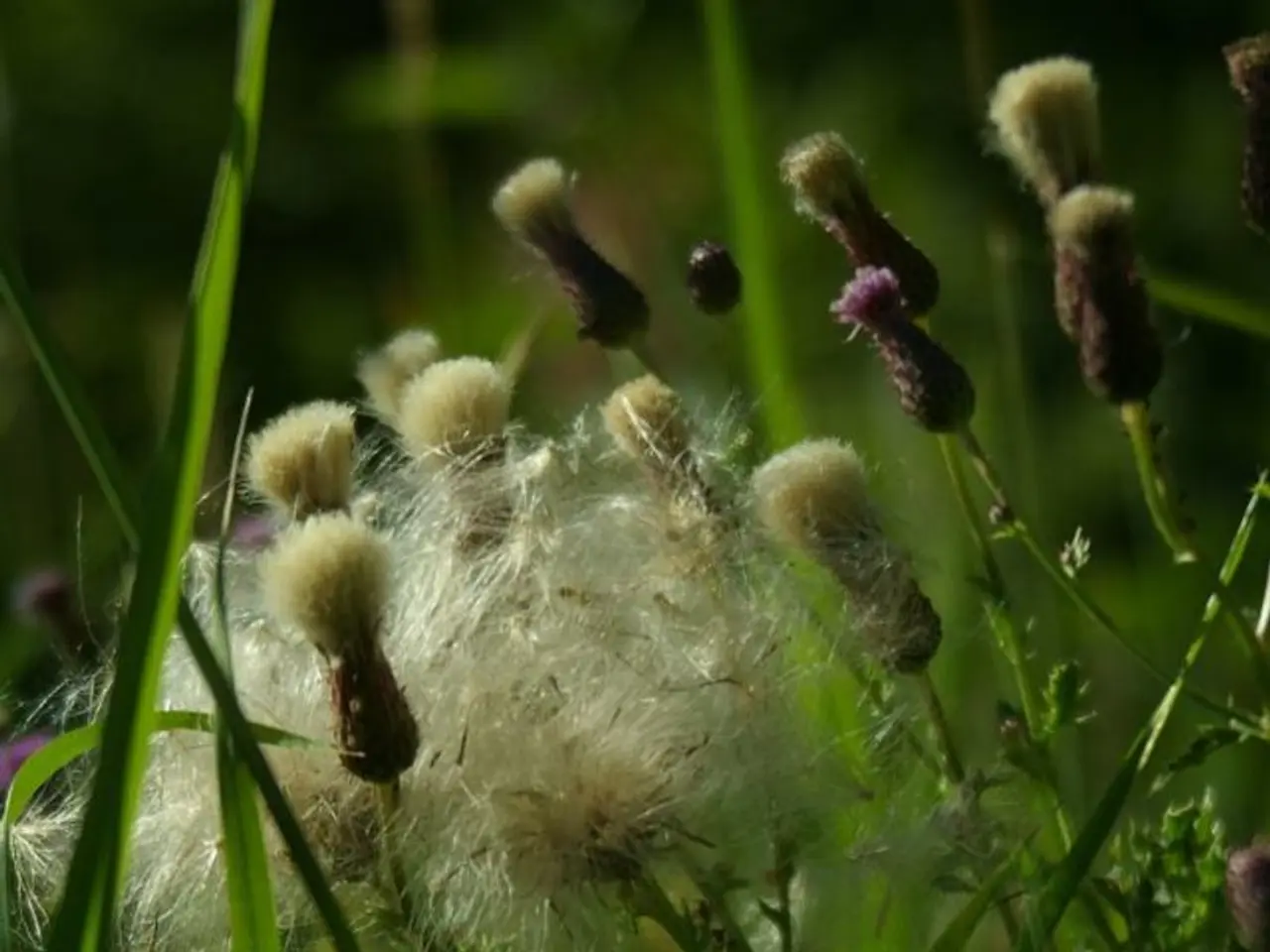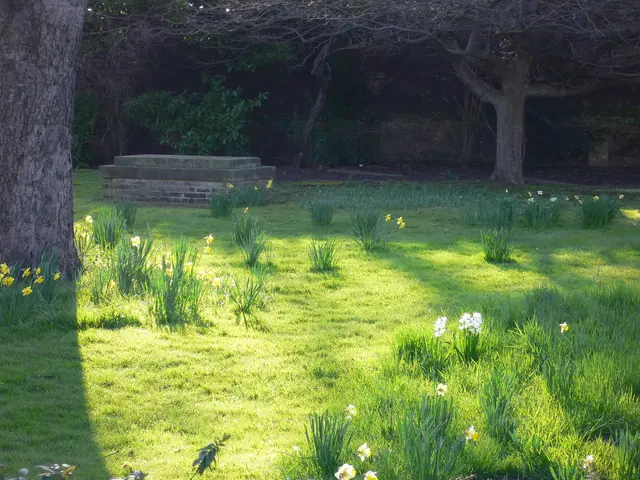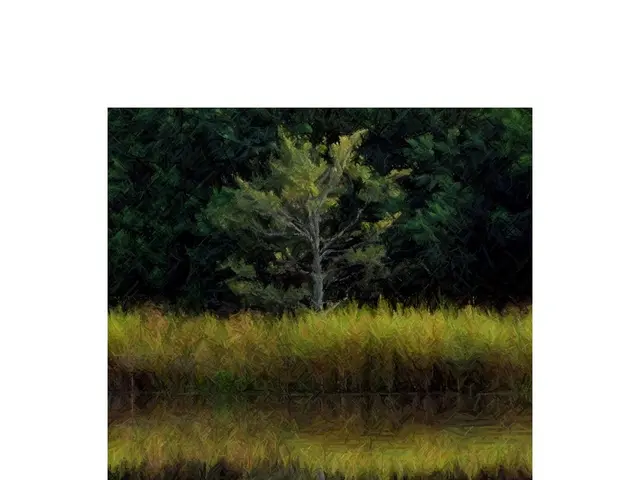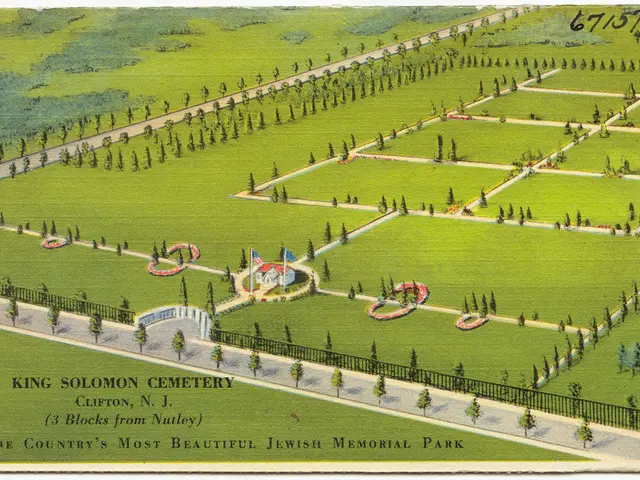Lawn Fertilization Timeline: Comprehensive Guide for Optimal Plant Nutrition
In the quest for a lush, green, and thriving lawn, timing is everything. The best time to apply grass fertilizer depends on factors such as the type of grass and climate, but a general guideline can help you achieve a healthy lawn all year round.
For cool-season grasses like Kentucky bluegrass, the ideal fertilizer applications are in the spring (April or May), mid-September, and late October to early November. These periods coincide with favourable growing conditions, when the grass is actively growing and can absorb nutrients effectively. Fertilizing during these times promotes healthy leaf growth in spring and strong roots in the fall to prepare for winter [1].
However, it is crucial to avoid fertilizing cool-season grasses during the hot summer months (June through August). The heat can stress the grass, increasing the risk of fertilizer burn. Nevertheless, if the lawn is thin and well-irrigated, a light fertilization with slow-release or organic fertilizers can be beneficial in summer [3].
Spring and fall are the two prime seasons for fertilizing lawns in general. Fertilizing during these periods helps the grass prepare for the harsher summer and winter months. It's best to fertilize on cool mornings or evenings to allow better nutrient absorption and reduce stress on the grass [2].
Late October to early November is particularly good for fall fertilization, as it encourages a final period of root growth before winter, making the lawn hardier and healthier in the spring [5].
To summarise, the optimal times to fertilize for a healthy lawn are:
| Season | Fertilizer Application Timing | Key Benefit | |-------------|-------------------------------------|---------------------------------| | Spring | April - May | Promotes leaf growth | | Early Fall | Mid-September | Strengthens grass after summer | | Late Fall | Late October - Early November | Encourages root growth and winter hardiness | | Summer | Only if lawn is thin + well-watered | Use slow-release/organic fertilizer to avoid burn |
It's essential to avoid fertilizing during extreme heat, heavy rain, or freezing temperatures [2][3][5]. Excessive fertilizer application can burn grass root growth, so following the directions on the grass fertilizer package is crucial to avoid damaging the lawn. Soil testing before fertilization is also necessary to avoid a patchy, yellow lawn.
Organic fertilizers, which improve garden soil quality and yield, and are more environmentally friendly, should be applied from May to September when temperatures are warmer. Applying fertilizer during hot summer months can lead to uneven application and potential grass discoloration.
Fertilizer is a crucial ingredient for lawn beautification, supplying essential nutrients like nitrogen, phosphorus, and potassium. Choosing the right fertilizer (liquid or dry granular) depends on personal preference and specific lawn needs. Evenly applying fertilizer with a drop spreader ensures equal distribution.
A healthy, green lawn not only enhances the appearance of a home but also provides a gathering space for families, a play area for children, and room for pets to roam. Mulched grass clippings can help control excess soil and provide strong roots. It's usually best to fertilize before rain is forecasted to allow the grass to absorb the fertilizer evenly.
Using organic fertilizers can stimulate soil microorganisms, promoting grass health, and avoiding fertilizing at the wrong time can prevent frost damage or excessive growth before the first frost. Maintaining a healthy, green lawn is a rewarding endeavour that brings joy and beauty to your outdoor space.
References: [1] University of Illinois Extension. (2021). Lawn Fertiliser. https://web.extension.illinois.edu/cfivt/yardandgarden/lawncare/lawnfertilizer/ [2] North Carolina State University Extension. (2021). Lawn Fertilisation. https://www.ces.ncsu.edu/depts/lawn/lawn-fertilization/ [3] Purdue University Extension. (2021). Lawn Fertilisation. https://extension.purdue.edu/extmedia/fnr/fnr-543-w.pdf [5] University of California Agriculture and Natural Resources. (2021). Lawn Fertilisation. https://ucanr.edu/sites/LAWNCARE/files/271383.pdf
In the realm of maintaining a lavish home-and-garden, gardening in the home-and-garden sector particularly involves the lawn. The ideal periods for gardening, specifically fertilizing, grass in a home-and-garden setup are generally during the spring (April or May) and fall seasons. These times are ideal as they promote healthy leaf growth in spring and strong roots in the fall. For instance, in late October to early November, fertilizing encourages a final period of root growth before winter, making the lawn hardier and healthier in the spring.








